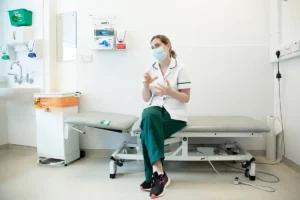
Teaching teen drivers can be both rewarding and challenging. It requires a combination of patience, expertise, and effective strategies to impart the necessary skills and knowledge while emphasizing safety at https://myfirstdrive.net/teen-driving-school.
Structured Driving Lessons:
Enrol teen drivers in a comprehensive driving education program that includes both classroom instruction and practical driving experience. These programs at https://myfirstdrive.net/teen-driving-school cover essential topics such as traffic laws, road signs, defensive driving techniques, and the dangers of impaired or distracted driving.
Graduated Driver Licensing (GDL) Programs:
Many jurisdictions have implemented GDL programs, which gradually introduce teen drivers to more complex driving situations as they gain experience. These programs typically involve three stages: a learner’s permit phase, an intermediate phase with certain restrictions, and finally, a full, unrestricted license.
Open Communication:
Maintain open communication with teen drivers about their driving experiences, challenges, and concerns. Encourage them to ask questions and seek guidance whenever necessary. This dialogue fosters trust and allows for constructive feedback.
Set Clear Expectations and Consequences:
Establish clear expectations regarding responsible driving behavior and the consequences of reckless or unsafe actions. Make sure teen drivers understand the potential risks associated with speeding, distracted driving, and driving under the influence of drugs or alcohol.
Use Technology Wisely:
Leverage technology to supplement driving instruction and monitor teen drivers’ progress. For example, there are smartphone apps that can track driving habits, provide feedback on areas needing improvement, and even simulate hazardous driving conditions in a controlled environment.
Practice Defensive Driving Techniques:
Emphasize the importance of defensive driving, which involves anticipating and reacting to potential hazards on the road. Teach teen drivers techniques such as maintaining a safe following distance, scanning the road ahead, and being prepared to react to unexpected situations.
Encourage Continued Learning:
Encourage teen drivers to continue learning and improving their driving skills even after obtaining their license. This could involve taking advanced driving courses, attending defensive driving workshops, or participating in community safety programs.
Lead by Positive Reinforcement:
Acknowledge and reward responsible driving behavior with positive reinforcement. Whether it’s a simple praise for using turn signals correctly or a small reward for completing a defensive driving course, positive reinforcement can motivate teen drivers to continue practicing safe habits.


















